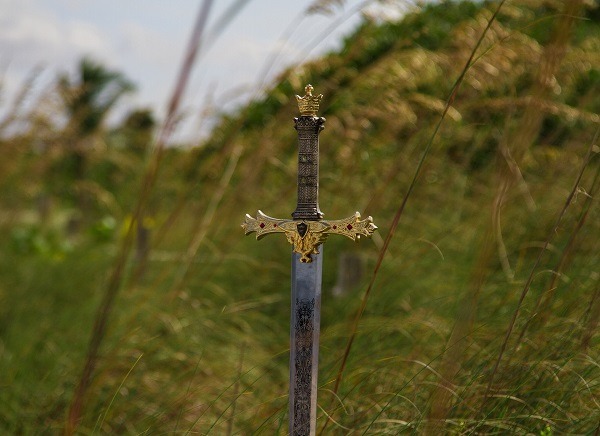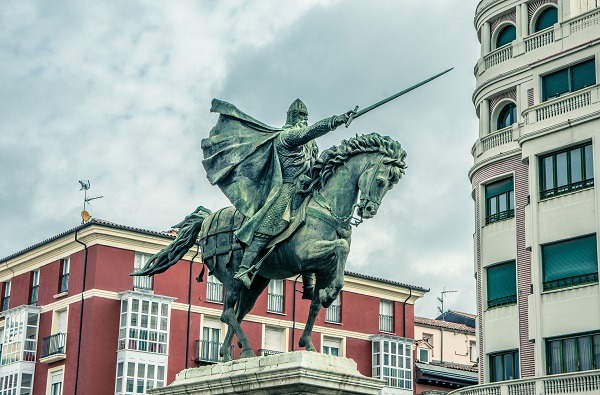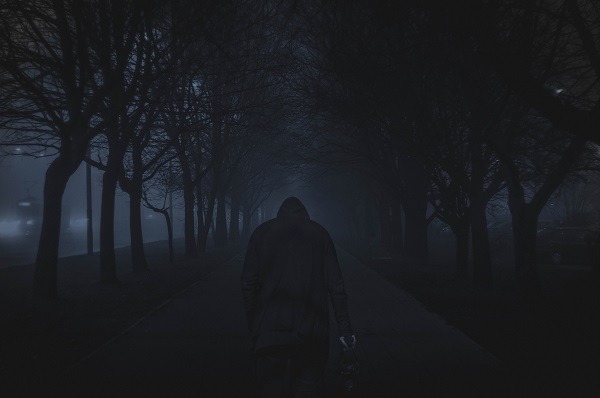We all know that crafting believable characters with strong motivations is vital in fiction writing. But how do you ensure that your characters remain compelling throughout the course of your story?
The answer is simple: make sure they all have strong character arcs.
Below, we’ll first discuss what exactly a character arc is.
Then we’ll take a look at the three main types of character arcs – change/transformation, growth, and fall – and discuss how to write each one effectively, creating characters that truly resonate with readers.

What is a character arc?
A character arc is basically the journey a character undertakes over the course of a story. But this doesn’t mean a physical journey.
We’re talking about an inner journey: one that makes a character grow, learn, change, evolve, or even completely transform as the story unfolds.
Generally, this means that a character begins the story as one person, transforms, grows or changes throughout, and ends the story as a different sort of person. In other words, a round character.
Think of it this way: all good stories revolve around conflict. This usually comes in the form of obstacles, both external and internal, that a character must overcome. In order to overcome the obstacles, the character needs to grow or change in some way. And that’s where the character arc comes in.
Obviously, no two character arcs in fiction are exactly the same. But there are three basic archetypes that the majority of character arcs fall into.
Let’s take a look at those now.

The 3 basic types of character arcs
1. Change/transformation arc
The first and perhaps most common arc is one of change and/or complete transformation. It goes hand-in-hand with the hero’s journey – a plot structure found in more books and films than you can count.
This character arc involves a complete change from ‘regular’ person to hero or saviour. Usually reserved for main characters/protagonists, the change/transformation arc usually begins with a plain old ordinary person who’s something of an underdog, or at least seems rather unlikely to be saving the world anytime soon.
However, as the story unfolds, this character undergoes a transformation – usually quite a radical one. Drawing on some inner strength, talent or drive they didn’t know they had, the character ultimately achieves success in what they’ve set out to do – and basically becomes a completely different person in the process.
Well-known examples of this type of character arc include:
- Harry Potter in the Harry Potter series
- Bilbo Baggins in The Hobbit
- Luke Skywalker in the Star Wars series
- Katniss Everdeen in The Hunger Games series
As you may notice, this character arc is perhaps most common in genre fiction such as fantasy or sci-fi. This is largely due to the mythic/epic quality of the ‘hero’s journey’ narrative – the theory of which has its origins in studies of mythology.

Writing a change/transformation arc
Perhaps the most useful concept to keep in mind when writing this type of arc is that of the lie your character believes.
Most, if not all change arcs involve the character in question believing a particular lie or misconception about themselves or the world around them. The character then discovers the truth, and the way they react to this discovery – how they change in the face of it – forms the basis of their character arc.
This doesn’t necessarily have to be a single lie or misconception, especially if the character arc stretches across multiple books in a series.
In the Harry Potter series, for example, the initial ‘lie’ that Harry believes is a literal lie told to him by the Dursleys: that he is an ordinary boy whose parents died in a car crash. He soon discovers the truth: that he is actually a wizard, and that he survived an attack from an evil wizard who killed his parents.
This sets off Harry’s character arc – his transformation from ordinary boy to brave, world-saving wizard who defeats Lord Voldemort. However, there are many more ‘lies’ that shape and reinforce his arc throughout the series, such as his perception of Severus Snape and the major reveal about his fate as one of Voldemort’s Horcruxes.
So when writing a change/transformation arc, ask yourself: what lie or lies does my character believe? How will they discover the truth? And how will this discovery lead them to change or be completely transformed as a person?

2. Growth arc
This type of arc is different from the above, in that the character grows, but does not necessarily undergo a complete change or transformation.
By the end of the story, they are still essentially the same person, but they have overcome something within themselves. As a result, they are a better or more rounded person, or simply different in some way.
Growth can also be achieved by the character changing their perspective, learning something new, or having a different role by the end of the story.
Basically, this arc is a little more subtle than the ‘hero’s journey’-style arc; in a growth arc, the character won’t end up being the saviour of the universe, but they will have grown, developed and changed in some way.
Well-known examples of this type of character arc include:
- Elizabeth Bennett in Pride and Prejudice
- Nick Carraway in The Great Gatsby
- Jaime Lannister in the A Song of Ice and Fire/Game of Thrones series
- Samwise Gamgee in The Lord of the Rings series
Just as the change/transformation arc is used most often in sci-fi and fantasy, the growth arc tends to be more common in literary fiction (but, being perhaps the most ‘general’ type of character arc, it’s found across all genres and styles).

Writing a growth arc
Growth arcs work particularly well for secondary characters, especially if your main character is undergoing a complete change/transformation arc. Samwise Gamgee in The Lord of the Rings, for example, experiences a growth arc, while the main protagonist Frodo Baggins undergoes more of a transformation.
While Frodo is totally and irrevocably changed by his experience with the One Ring – symbolised by him leaving the Shire to find peace instead in the Undying Lands – Sam is essentially the same hobbit after his journey, albeit a wiser and more weathered one. He returns to life in the Shire, different but not totally transformed.
When writing growth arcs, compare your character at the beginning and end of the story and ask yourself: at their core, are they essentially the same person? Would they be able to return to ‘regular life’, just with a different perspective, worldview or way of doing things?
As long as your character has learned something, changed their perspective, or improved an aspect of themselves throughout the story, they’ve experienced a growth arc – even if, in their heart, they’re the same homely hobbit they’ve always been.

3. Fall arc
While the above two types of character arc are generally positive, this is a negative arc. It involves the decline or ‘fall’ of a character through bad choices they have made, which ultimately doom them (and potentially others).
By the end of this arc, the character has usually either died, become corrupted, or lost their mind (or if they’re lucky, all three). They have likely ruined their own life as well as the lives of others, and have experienced no redemption or salvation – only downfall.
In the most extreme form of the ‘fall’ arc, the character begins the story as a good/happy/successful person, but by the end of the story is completely unrecognisable – basically the polar opposite of the positive change/transformation arc we discussed above.
Well-known examples of this type of character arc include:
- Walter White in Breaking Bad
- Hamlet in Shakespeare’s Hamlet
- Anakin Skywalker/Darth Vader in the Star Wars series
- Dorian Gray in The Picture of Dorian Gray
This type of arc is seen a lot in classic tragedy, but is also common in modern literature and film.

Writing a fall arc
Author K. M. Weiland posits that there are three subtypes when it comes to this arc:
- ‘Typical’ fall – the character changes for the worse through bad decisions.
- Corruption – the character changes for the worse but ends up embracing the change.
- Disillusionment – the character discovers a truth about the world that leaves them unhappy or bitter at the end of the story. (This type is sometimes better applied to the growth style of arc, as it doesn’t necessarily involve a complete transformation, just a change of perspective within the character.)
Fall arcs are perhaps most commonly used in creating an authentic villain. They’re particularly effective when the character begins as someone who could be perceived as the hero, but undergoes a negative transformation and becomes a villain or antagonist instead (plot twist!).
When writing a fall arc, it helps to consider whether you want readers to be sympathetic to your character. If so, perhaps go down the route of a traditional ‘fall’ arc or a disillusionment; if not, you can create a full corruption arc, in which the character is as terrible as they come!
Be sure to keep things realistic when it comes to character motivations, though – there’s no point giving a character a negative or ‘villain’ arc if there aren’t believable motivations behind it.

A note on flat character arcs
Something to remember: not all characters need to experience a major, defined character arc.
Flat character arcs, while much less common than the types we’ve discussed above, do exist. They involve no change or growth within the character, who’s exactly the same at the end of the story as they were at the beginning.
Flat character arcs are most often found within certain genres, such as mystery (e.g. Sherlock Holmes), adventure (e.g. Indiana Jones), and spy thriller (e.g. Jack Reacher, James Bond).
However, flat character arcs can and do exist within all genres and styles of story. Many minor characters experience flat arcs, leaving the more defined arcs for the protagonist and other main characters.
An important note, though: be careful not to confuse a flat character arc with a lack of development for your character. Sometimes, if your character’s arc appears quite static, it means they are underdeveloped and that their journey and characterisation need to be more compelling – especially if they are a major character.

***
How do you use character arcs in your writing? What are some of your favourite examples of character arcs in fiction? Share with us in the comments!
10 responses to “Create Compelling Characters With These 3 Types of Character Arcs”
Brilliant Article Miss Claire.
The duology that I am writing is about a 25-year-old convict who recites his tale of how from being a naive 16-year-old teenager on a vacation with his parents and sister transformed into the youngest and the most ruthless Drug Lord in the country. His audience is a best selling crime writer who sits with him as he recites his tale just two days before the date of his official hanging in the cold damn confines of a prison cell.
I am still a newbie at writing but this article (especially the character fall arc) is really made me consider the approach I should take in framing my story and my characters. So… thank you for sharing it with us.
Hi Ray,
So glad to hear you found the article useful! Your duology sounds very intriguing, and it definitely sounds like your MC experiences elements of the ‘fall’ arc. All the best with telling his story!
Happy writing,
Claire
Thank you so much, Claire.This is a very wonderful article, indeed. It is very useful and I guess it would help me a lot improving charachterization in my writing. Personally, I prefer creating characters with growth or fall arc. Maybe this is because I like digging deep inside my characters. A very impressive example of character arcs in fiction is that of Heatjcliff in Emile Bronte’s masterpiece, Wuthering Heights. Heathcliff’s is a fall arc as far as I understand the article.
Hi Nahid,
You’re very welcome! Great to hear you enjoyed the article. Totally agree about Heathcliff’s arc in Wuthering Heights – it’s a great example of a fall.
Best of luck with your writing and characterisation!
Claire
Great post! Stumbled upon it while researching character arc and it helped clarify some things.
Still, I’m struggling to figure out where my antagonist falls when it comes to the 3 negative arc choices. He’s an immortal king who—after a previous banishment—feels it’s unwise to cross the being who banished him, fearing that he’ll have to face true death. Instead, he goes after the being’s followers, content to keep the being unknown to the populace.
His daughter, ill due to her father’s magic, seems to be getting worse. And the king has found a possible cure—but this forces him to face the being’s army and the magical items he needs slowly strip him of his humanity—transforming him into a beast. He keeps at it, despite this, wanting to get the cure for his daughter. He realizes that what he thought would be a true death, only became yet another prison—only worse. He’s unable to return to his daughter as a human.
His sacrifice ends up being in vain as the illness kills his daughter anyway, and—as a result of this transformation and for trying to kill off the being’s followers—the king ends up trapped in another dimension, to be kept there for an undetermined amount of time.
It feels like this would follow a Fall arc but I’m not sure. Been puzzling over this for a couple days. Any thoughts?
Hi Maddie,
Glad to hear you found the post helpful!
It definitely sounds like your character comes in under the ‘typical’ fall arc, due to the tragic consequences of the decisions he makes. It would only be a corruption arc, for example, if by the end the character were to embrace his descent – but it sounds like he actually regrets it, so his arc would be more the ‘traditional’ type of fall.
Hope this helps somewhat!
-Claire
Hey, Claire!
Hope you don’t mind me calling you by your first, as I’m not sure if you’re a ‘Ms.’ or a ‘Mrs.’
This was incredibly useful in determining what I should start out with for my story. Quick question – I’m thinking about my character have a fall arc, but by the more because of happenings in life that are completely out of their control rather than her own choices. The character and her spouse and children die at the end, and all of it just completely, agonizingly crumbles apart in the last few chapters (Dying during childbirth, spouse takes the kids and is kicked out of the settlement they lived in in the middle of nowhere, wild animal comes and slaughters). Is there a specific arc name for this arc (or is it just a regular fall arc), and what do you have for advice on how to maximize emotional impact?
Ms Claire, I found your post incredibly helpful. I am in the process of writing a synopsis for my novel and needed to look into “arc” as a literary device. It wasn’t working for me until I came across your article. I know now that I have a character arc. My novel is the story of an Irish immigrant girl, Ellen Flood who leaves Ireland for Boston. She overcomes obstacles and changes the way she sees the world. She makes a critical choice in marrying her William and then Ellen goes on to marry and make a family. Her closure comes with her death. It is her journey. So, thank you. Ellen Demers
I found this article very helpful. I’m wondering if I may quote you from this article in my own blog. And if I’m able to quote more than a paragraph of it. I’ll of course credit your name and website and leave a link to this for others to see the full article. I just know that I will help a community of writers I work with.
Hi Chassidy,
Thanks for your comment. We’re happy for you to quote us, as long as you cite the author and include a link back to our original post 🙂
Thanks for asking!
– The Writer’s Edit Team